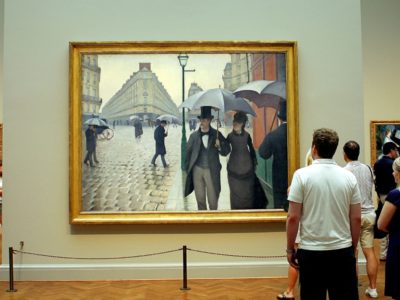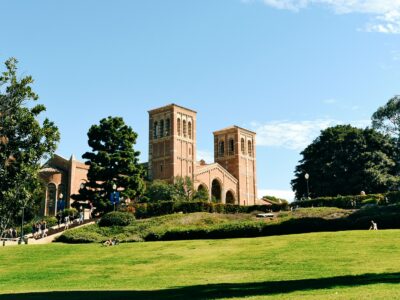“So what are you majoring in at UCLA?”
“I’m an art history major.”
“What’s that?”
It’s difficult enough for incoming freshmen from high school or community college to forge a path in university and decide on a major. It was challenging to maintain a good GPA, do volunteer work, go to actual work and join extracurricular activities during high school and community college. All for parents, to endlessly brag about their children.
When I first got word of my acceptance into UCLA, after graduating from Santa Monica College, my relatives began to ask about what I’ll be studying. I told them art history. They didn’t see the point of the major.
It was unexpected for me to choose a humanities major. It seemed like I broke some secret Arab code.
I come from a Palestinian family who have all successfully integrated into careers in mainly business and the sciences. My father is a businessman at 7-Eleven, my uncle is a professor of electrical engineering at LMU, my aunt is a chemist in pharmaceuticals, my cousin is an anesthesiologist in Yorba Linda and my sister majored in sociology.
Knowing the baggage of what my family had gone through when they immigrated, it was expected that I carry on their legacy. Which was an expectation I thought I had already fulfilled by becoming a UCLA student. I seemed like the odd one from the bunch.
On the inside I had to remind myself of what made me choose art history in the first place. I’ve always been attracted to beautiful things. I manage to find beauty everywhere. I am a visual person. Anywhere I go, my eyes manage to fix on a certain something and my mind thinks critically of how every detail is arranged.
As I stepped into my first art history course at UCLA, I looked at the students surrounding me. None resembled me or my name.
“Where are the other Arabs on campus?” I contemplated.
“They’re probably following the expectations of Arab families, they’re in the computer sciences, business, economics, medicine, political science and law,” I concluded.
This trend continued as I took more art history courses at UCLA. Just when I transitioned into UCLA, the same perceptions followed me. My classmates would ask the origin of my name like I was some exotic creature or professors politely asked if I knew how to read Arabic. I don’t.
Not only did I have to battle expectations from family, it felt like I had to constantly serve as the representation of my entire race in the classroom.
Instead of looking for other Arab Americans in the room, I began to notice the other minorities in the room.
The university’s promise of diversity didn’t really apply to the humanities department. There’s hardly any Asian Americans, African Americans and Latino Americans in any of my art history courses. However, I managed to befriend Annie, a Korean American, who happened to sit next to me and Ana Laura, a Brazilian American girl who always found a way to speak up during lecture.
As I worked internships at LACMA and the Hammer Museum, I never met an art history professional of Middle Eastern descent. The world seemed repetitive. This all changed in my fall quarter, when I enrolled in Western Islamic art history course with Dr. Balafrej. Finally I met a professional with a similar cultural identity to mine. She gave me the relief my conscience was searching for. I was proud to have my passions validated by someone who represents my race, gender and interests; she gave me the confidence to pursue a bachelor’s degree in Art History.
It’s a lot of weight on my shoulders.
I am proving to my family that an art history degree is reasonable for gaining valuable skills and career. I know all too well that I come from a background which has been Orientalized and misrepresented in Western art for centuries, but I am learning my perspective is important enough. Every day, I learn to embrace the uniqueness of being the Middle Eastern girl in an art history class.



















